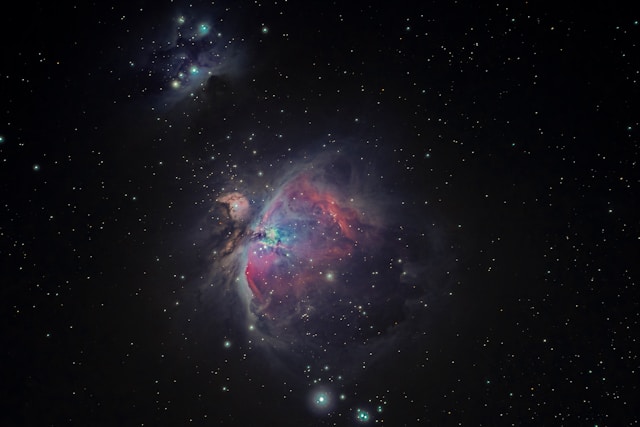The night sky has captivated humanity for millennia, and the desire to chart its stars is as old as civilization itself. From ancient cultures using rudimentary tools to navigate the heavens, to modern technology enabling anyone to create a customized star map, the history of star mapping is rich and fascinating. Over time, advancements in science, astronomy, and cartography have transformed the way we view and document the stars. Let’s explore the journey of star mapping through history, from its ancient origins to the customizable maps available today.
Early Star Mapping: Ancient Civilizations and their Tools
The history of star mapping begins with ancient civilizations that used the stars for navigation, agriculture, and religious purposes. The Egyptians, Babylonians, Greeks, and Chinese were some of the earliest cultures to develop star charts. These early astronomers used basic tools, such as sticks, ropes, and their bare eyes, to track the movements of celestial objects.
The Babylonians were pioneers in tracking planetary movements. As early as 1600 BCE, they had developed star catalogues, detailing the positions of stars and planets with remarkable accuracy. They used these observations primarily for astrology and divination, believing that celestial events influenced human affairs.
Meanwhile, the ancient Egyptians aligned their pyramids and temples with celestial bodies, believing that the stars were deeply connected to the afterlife. They tracked the rising of the star Sirius, which heralded the annual flooding of the Nile, crucial for agriculture. Their star maps were often inscribed on temple ceilings and tombs, showcasing their sophisticated understanding of the heavens.
In ancient Greece, astronomers like Hipparchus and Ptolemy created some of the most detailed star maps of their time. Hipparchus, in particular, is credited with creating the first known star catalog around 150 BCE. He used a device called the astrolabe, an ancient instrument that could measure the altitude of celestial bodies, to create his maps. His work laid the foundation for future astronomers and would be referenced for centuries to come.
The Middle Ages and Renaissance: Expanding the Horizons
During the Middle Ages, star mapping advanced further in both the Islamic world and Europe. Islamic scholars preserved and expanded upon Greek astronomical knowledge, improving star catalogs and inventing more accurate tools for celestial observation. The astrolabe, a legacy from the Greeks, was refined by Muslim astronomers and became a key tool for navigation.
Al-Sufi, an Islamic astronomer, translated and expanded on Ptolemy’s work in his famous book, “The Book of Fixed Stars” (964 AD). This book corrected some of Ptolemy’s errors and provided a more comprehensive catalog of stars. Al-Sufi’s star maps were richly illustrated, blending scientific precision with artistic beauty.
In Europe, the Renaissance marked a turning point for star mapping, as astronomers began to challenge long-held ideas about the cosmos. Nicolaus Copernicus, in the 16th century, proposed a heliocentric model of the universe, which radically shifted the way people viewed the stars. His ideas influenced Tycho Brahe and Johannes Kepler, who made significant contributions to star mapping through precise astronomical observations.
Brahe, though he rejected the heliocentric model, created one of the most detailed star catalogs of his time. Kepler built on Brahe’s data and formulated the laws of planetary motion, which not only improved star maps but also paved the way for modern astronomy.
The Age of Telescopes: A New Era of Star Mapping
The invention of the telescope in the 17th century revolutionized star mapping. Galileo Galilei, one of the first to use a telescope for astronomical purposes, discovered new celestial bodies that were previously invisible to the naked eye, such as the moons of Jupiter. This marked a significant shift from the traditional, naked-eye star maps of earlier eras.
Telescopic star maps became much more detailed, as astronomers could now observe distant stars, nebulae, and other celestial phenomena. Johannes Hevelius, a Polish astronomer, created one of the most comprehensive star atlases in 1690, the “Uranographia”. This atlas included over 1,500 stars, many of which were newly discovered through telescopic observation.
Throughout the 18th and 19th centuries, astronomers like William Herschel and his sister Caroline Herschel continued to map the skies, cataloging thousands of new stars, clusters, and nebulae. William Herschel is also credited with discovering Uranus, expanding the boundaries of known celestial objects. These advancements were crucial in laying the groundwork for modern star mapping.
Modern Star Maps: Technology Meets Astronomy
The 20th century brought even more profound changes to star mapping, driven by technological advancements in photography, computing, and space exploration. Astronomers could now capture detailed images of the night sky, leading to the creation of more accurate and comprehensive star charts.
With the advent of computers and powerful software, star mapping became more precise than ever before. Large-scale sky surveys, such as the Palomar Sky Survey in the 1950s and the Sloan Digital Sky Survey in the late 1990s, mapped billions of stars and galaxies, providing astronomers with an unprecedented level of detail about the cosmos.
In modern times, star maps are no longer just for scientists and astronomers. Today, anyone with an interest in the night sky can create their own customized star map, thanks to online tools and services. These maps allow users to select a specific date and location, displaying the stars exactly as they appeared at that moment in time. Whether it’s a special occasion, such as a wedding or a birthday, or simply a personal interest in astronomy, these maps have made star mapping more accessible and personal than ever before.
The Future of Star Mapping: Space Exploration and Beyond
As humanity continues to explore space, the future of star mapping looks more promising than ever. Modern telescopes, such as the Hubble Space Telescope and the upcoming James Webb Space Telescope, are providing deeper and clearer views of the universe. These instruments allow astronomers to map not only the stars in our galaxy but also galaxies billions of light-years away.
With the rise of private space exploration, such as missions by SpaceX and other companies, it is possible that star mapping will soon extend beyond Earth. Future star maps could include data from missions to Mars, the Moon, and even beyond our solar system. These maps might document not only the night sky as seen from Earth but also from other celestial bodies.
Furthermore, AI and machine learning are revolutionizing the way we analyze and interpret star data. These technologies can process vast amounts of astronomical data, identifying patterns and creating even more detailed and accurate star maps than ever before.
Conclusion: From Ancient Stars to Personalized Maps
The history of star mapping is a testament to humanity’s enduring fascination with the night sky. What began with simple tools and naked-eye observations has evolved into a highly sophisticated field, blending science, technology, and art. Today, anyone can create a customized star map that captures a special moment in time or simply offers a glimpse of the stars above. As we continue to push the boundaries of space exploration and technology, star mapping will undoubtedly play a key role in our understanding of the universe, both now and in the future.


